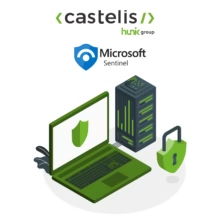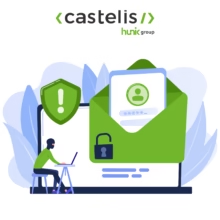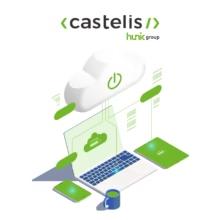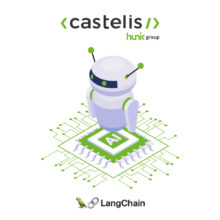
Understanding the Zero Trust model: A revolutionary approach to cybersecurity
The “Zero Trust” model is an innovative approach to cybersecurity. In practical terms, what is Zero Trust? Essentially, it’s based on the idea that trust should never be granted blindly, either inside or outside organizational perimeters. Every access request is treated as if it came from an untrusted source, requiring rigorous verification before approval. This approach is considered revolutionary, as it breaks with traditional security paradigms based on defined perimeters. By focusing on continuous verification rather than inherent trust, Zero Trust offers a robust response to modern threats, redefining cybersecurity standards.
Zero Trust: The future of cybersecurity for modern businesses
Today’s cybersecurity challenges
With the digitization of operations and the rapid expansion of cloud technologies, businesses face an increasingly complex array of threats. Ransomware attacks, phishing, data breaches and targeted cyberattacks have become commonplace, highlighting the vulnerabilities of traditional security approaches. What’s more, with the rise of telecommuting and mobility, the traditional corporate perimeter has blurred, making defense methods based on clearly defined boundaries obsolete.
How Zero Trust meets changing business needs
In the face of these challenges, the Zero Trust model presents itself as an appropriate solution for modern businesses. By removing the notion of perimeter-based trust, it places the emphasis on continuous verification of every access request, whether from inside or outside the organization. This approach ensures that only authenticated and authorized users and devices can access company resources. What’s more, Zero Trust adapts in real time to user behavior and access contexts, offering enhanced protection against internal and external threats. In an ever-changing digital world, adopting Zero Trust is not just strategic, it’s essential.
The technical foundations of the Zero Trust model deciphered
The Zero Trust model is based on the idea that organizations should not automatically trust anyone or anything, inside or outside their perimeters, and should instead check everything that attempts to connect to their systems before granting access. Here are the technical foundations of this model:
- Principle of least privilege (PMP)
This is the fundamental idea that each user, system or service should have only the privileges necessary to perform its specific task, and nothing more. Access rights are granted according to specific needs, and are regularly reviewed to ensure that they remain appropriate.
- Continuous verification
Instead of simply verifying the identity of a user or device on first login, the Zero Trust model requires continuous verification. This means that authenticity is regularly reassessed during the session to ensure that it has not been compromised.
- Network segmentation and Zero Trust architecture
Rather than relying on a traditional security perimeter, the Zero Trust model divides the network into micro-perimeters using Zero Trust architecture. This limits the lateral circulation of threats and reduces the attack surface.
- Multi-factor authentication (MFA) and Zero Trust Access
MFA is essential in a Zero Trust model. It requires users to provide multiple forms of identification before accessing resources. Zero Trust Access ensures that only authenticated and authorized users and devices can access specific resources.
- Context-based assessment
Access is determined according to a variety of contextual factors, such as the user’s location, the type of device used, the time of day, and so on. This enables access levels to be dynamically adjusted to suit the situation.
- Identity-centric infrastructure and Fabric Agent
In the Zero Trust model, identity (be it user, device or application) is the new security perimeter. Identity and access management (IAM) solutions are essential for managing and verifying these identities. The Fabric Agent plays a crucial role in this infrastructure, facilitating secure communication between devices and resources.
- Zero trust by default
Anything that tries to connect to a system or network is considered untrusted by default, whether it comes from inside or outside the traditional perimeter.
- Visibility and analysis
Monitoring and analysis solutions are essential to provide visibility on who is accessing what, when and how. This enables suspicious activity to be quickly detected and responded to.
In summary, the Zero Trust model is based on the idea that trust is a risk and should be minimized as much as possible in IT environments. This requires a combination of technologies, policies and procedures to be implemented effectively.
The main Zero Trust players in the cloud
Azure and Zero Trust: how is Microsoft integrating this approach?
Azure, Microsoft’s cloud platform, has positioned itself as a leader in the adoption of the Zero Trust model. Microsoft has designed Azure with an integrated security approach, where Zero Trust is at the heart of its strategy.
Azure Active Directory, for example, offers cloud-based identity management, enabling multi-factor authentication, conditional access assessment and role management. Azure Security Center, meanwhile, provides unified security recommendations and continuous monitoring. The major difference with other providers is the native integration of these services into the Microsoft ecosystem, offering a seamless experience for users of Windows and other Microsoft products.
AWS: its vision and tools for Zero Trust
Amazon Web Services (AWS) approaches Zero Trust with a flexibility that enables companies to build customized architectures. AWS Identity and Access Management (IAM) is at the heart of this strategy, enabling users to control access to AWS resources on a granular basis. AWS also offers services such as AWS Shield for DDoS protection and AWS WAF for web application protection.
What sets AWS apart is its wide range of services, which can be assembled in a modular fashion, enabling companies to build Zero Trust solutions tailored to their specific needs. Castelis is an Azure partner to implement and manage these solutions for our customers.
Cloudflare and its contribution to the evolution of Zero Trust
Cloudflare, well known for its web performance and security solutions, has also made significant contributions to the Zero Trust ecosystem.
Cloudflare’s unique approach to Zero Trust focuses on the network edge. Rather than focusing solely on the cloud or data center, Cloudflare aims to secure access to any resource, anywhere. With Cloudflare Access, for example, users are always authenticated and authorized before accessing an application or resource, regardless of their location.
Cloudflare is distinguished by its ability to act as an intermediary, verifying users before they reach a company’s infrastructure, thus reducing the attack surface by up to 95%. Castelis is Cloudflare’s main partner in France, and was named Best MSP Partner 2022 for its quality of service.
Zero Trust: Why adopt it now?
The Zero Trust approach is becoming an absolute necessity for modern businesses in the face of constantly evolving cyber threats. By eliminating implicit trust and requiring reinforced authentication, it drastically reduces entry points for attackers. What’s more, this strategy offers effective network segmentation, limiting the spread of intrusions.
The benefits are not limited to security: adopting Zero Trust alsooptimizes operations, enhances regulatory compliance andgenerates significant cost savings, notably by avoiding the devastating costs associated with data breaches.
In short, Zero Trust is not just a defensive strategy, but a strategic investment that strengthens customer confidence, protects the company’s reputation and ensures its longevity in an ever-changing digital landscape.
Put your trust in a cybersecurity and cloud professional: contact Castelis!
Voir plus de Actualités

Why Microsoft Sentinel is Essential for Cyber Threat Management: A Practical Guide for CIOs

Top best practices to improve email security with DMARC

Cloudflare Zaraz Guide: Manage your third-party scripts at the Edge for better web performance
